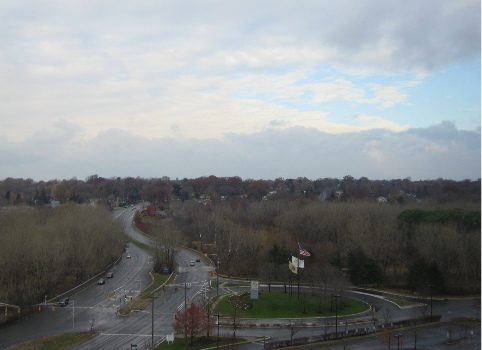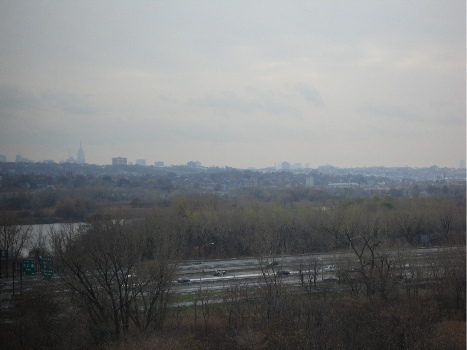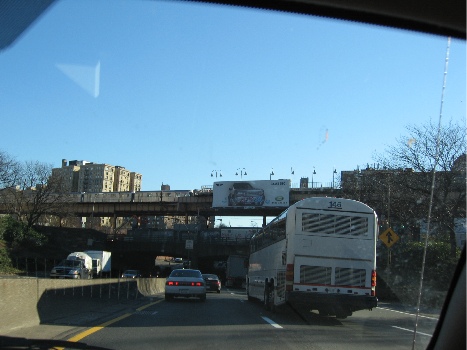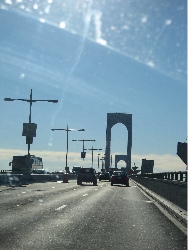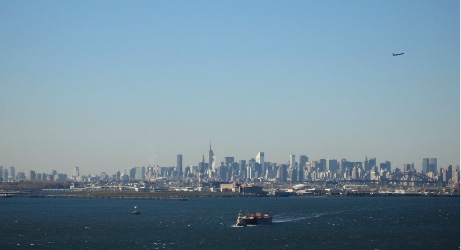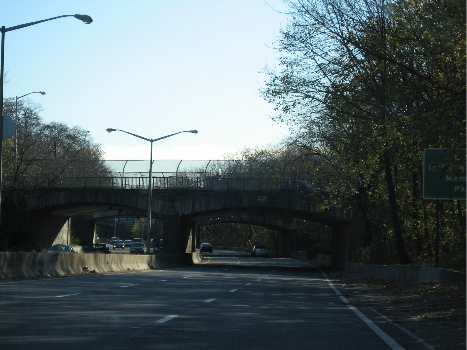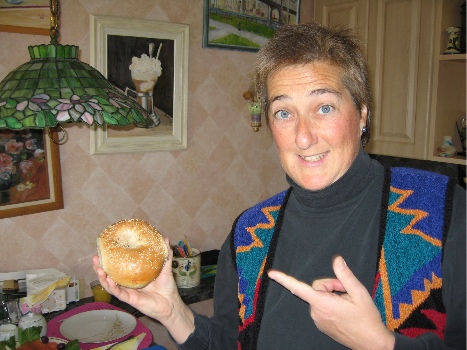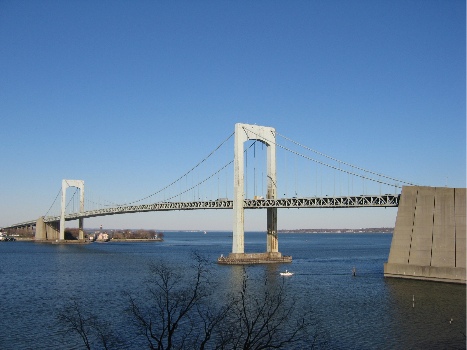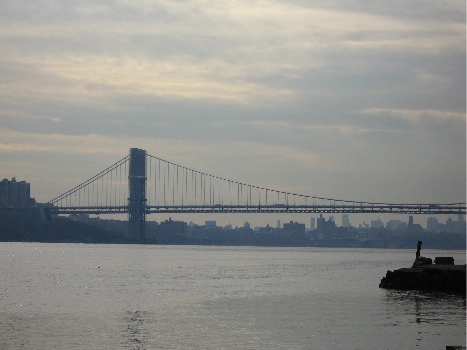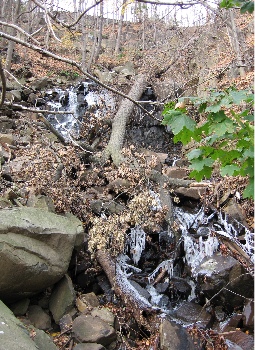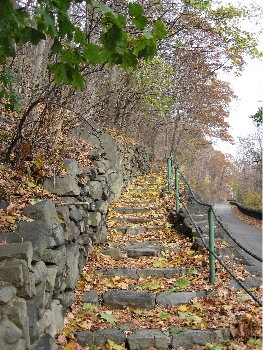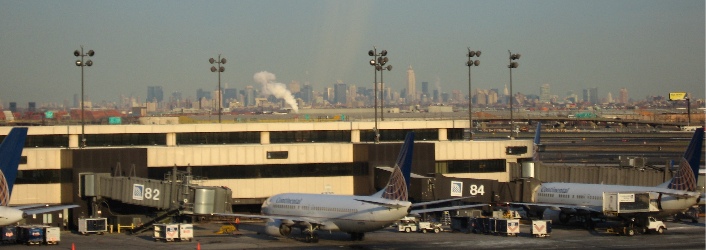My Ducati comes out of the shop and hits the road.
Before I started flying, before I started horseback riding, I learned to ride a motorcycle. In fact, it was one of the four goals I set for myself when I was in my 20s. (The goals were: learned to ride a motorcycle, learn to fly a helicopter, learn to speak Spanish fluently, and learn to play the piano. I got the first two done and haven’t done much with the others. But I have added a fifth goal: learn to juggle.)
My first motorcycle was a 1980 Honda CB400 Hawk. It was a standard bike and although it was 11 years old when I bought it, it only had 421 miles on it. The previous owner, a woman, had been diagnosed with cancer not long after buying the bike and had died soonafterward. Her husband, a motorcycle dealer, had held onto it for years before finally selling it to me. The bike was nice and good for learning. But I soon wanted something a little sportier.
I found that something at an Americade motorcycle rally at Lake George, NY one year. I went for a test ride with Yamaha and rode one of their Seca IIs. It was a 600cc bike with an upright riding position but sporty fairings. Later that year — 1992 — I bought one. (Oddly enough, the Yamaha dealer was next door to a BMW dealer and Mike bought his second bike there the same day. We certainly made a few folks green when we showed up at a motorcycle camping trip along the Delaware River on two brand new bikes.)
I liked that bike. I took it on a trip that Mike and I made from our New Jersey home down Skyline Drive and the Blue Ridge Parkway into Tennesee. From there, we rode east to the coast and rode up the barrier islands — taking a few ferries along the way — on our way home. That was a camping trip; you wouldn’t believe how much gear we were able to bring along. Later, I got Givi luggage for it — expensive, Italian hard luggage that’s perfect for long trips. And a Corbin seat, of course. Comfort is important.
But I fell out of like with that bike on another one of our motorcycle camping trips with the gang. The ride was to a campground in the Finger Lakes district of New York. In trying to keep up with the guys, I found the top end of the bike. There’s nothing so disheartening as turning the throttle and finding that it won’t turn anymore as the guys you’re riding with start to leave you behind. I kept up okay, but I wasn’t a happy camper. I needed a new bike.
By that time, it was 1995 or 1996. I went to my local motorcycle dealer and, on a whim, test rode a Ducati Monster. I was very impressed, especially when I turned the throttle what I thought was a conservative amount and almost pulled a wheelie. Egads! That bike had testosterone! Of course, I didn’t like the styling of the Monster. I wanted something sportier looking. So I wound up with a Ducati 900 SS CR. (The letters stand for SuperSport Cafe Racer.)
This ain’t your auntie’s motorcycle. This is a street-legal race bike. It’s absolutely terrible at speeds below 25 MPH, making it a real drag to ride in city traffic. But get the RPMs over 4500 on a twisty mountain road, and you’re in for the ride of your life.
That’s if you can ride it.
I got pretty good at riding it. Leaning into the tight turns, keeping the RPMs high, keeping my hand and foot off the brakes. Downshift to slow down — that bike is made for engine braking. Not that the Brembo brakes do a bad job at slowing things down when you need them to.
I made only three customizations on the bike. First, I replaced the painfully uncomfortable seat with a Corbin saddle. Second, I had the gears changed slightly to make it easier to shift — I can’t remember exactly what they did, but it really helped out when I had to ride slowly. And third, I replaced the stock mirrors, which did a great job showing me my shoulders and arms, with aftermarket mirrors that actually showed the road behind me.
Not long after buying the bike, we moved to Arizona. I brought both bikes — the Ducati, for sport riding and the Yamaha for touring — with me. (The Honda was long gone; I sold it when I bought the Yamaha.) We did a lot of riding on Yarnell Hill, White Spar Road, and Mingus Mountain. But that’s all the interesting riding there was around here.
I remember when a friend of ours from back east came for a visit and rented a BMW for the day. We rode on a 350-mile loop on some of the nicest back roads in central Arizona. I took the Ducati and had a blast. But my shoulders were sore for the next few days. That bike just isn’t made for touring.
We also went on a trip with Chrome Caballeros. They do motorcycle camping tours. I rode the Ducati and Mike rode his BMW; all the other guys in the group rode Harleys. (They wore the Harley clothes, too. What’s that all about?) I took the bike as far northwest as Zion National Park and as far east as Page. One day, we rode over 300 miles. But I was in better shape then and didn’t stay sore for long.
Over time, I rode less and less. I started horseback riding instead. Then I started flying. The motorcycles spent some time in a storage shed, then moved to my hangar. The batteries always seemed to be dead when I wanted to ride them. The Yamaha needed work on the fuel system; I had it taken care of, then put it back in the hangar. Time passed.
This past autumn, I took the bikes out to ride them. The Yamaha wouldn’t stay running. The Ducati was leaking fuel from its muffler. Both bikes needed attention and I was neglecting them.
So we brought them to Dan. You may have read about Dan in another article here. He does motorcycles, too. In fact, he’s a Harley guy (although I don’t hold that against him).
I picked up the Ducati on Wednesday.
“Did you take it for a ride?” I asked Dan.
“Yeah,” he said. “That bike is fast. It surprised me.”
I didn’t say what I was thinking: heck, it’s not a Harley.
I rode it on 93 to burn the oil that had been in the muffler out of the system. It rode good. I came down Vulture Mine Road from 93 to 60, following a car. The speedometer said I was doing 70. It didn’t feel that fast and I doubted that the car in front of me would be doing 70 on that road, so I figured the speedometer was screwed up. Then I put it back in the hangar.
I had it out again today. I stopped at the airport for a latte and some chatting at Stan’s Latte Cafe. Dave volunteered to lead me down 60 toward Aguila at a steady 65 MPH to test the speedometer. We did this little test and the speedometer registered 70. (I guess I should have trusted my speedometer a bit more than I did on Wednesday. Some people just drive too fast on Vulture Mine Road.)
When the Yamaha comes back, I’ll have two bikes that need attention again. Maybe it’s time for another road trip. One I can take on two wheels.

 I’m currently wading through William Safire’s book,
I’m currently wading through William Safire’s book, 